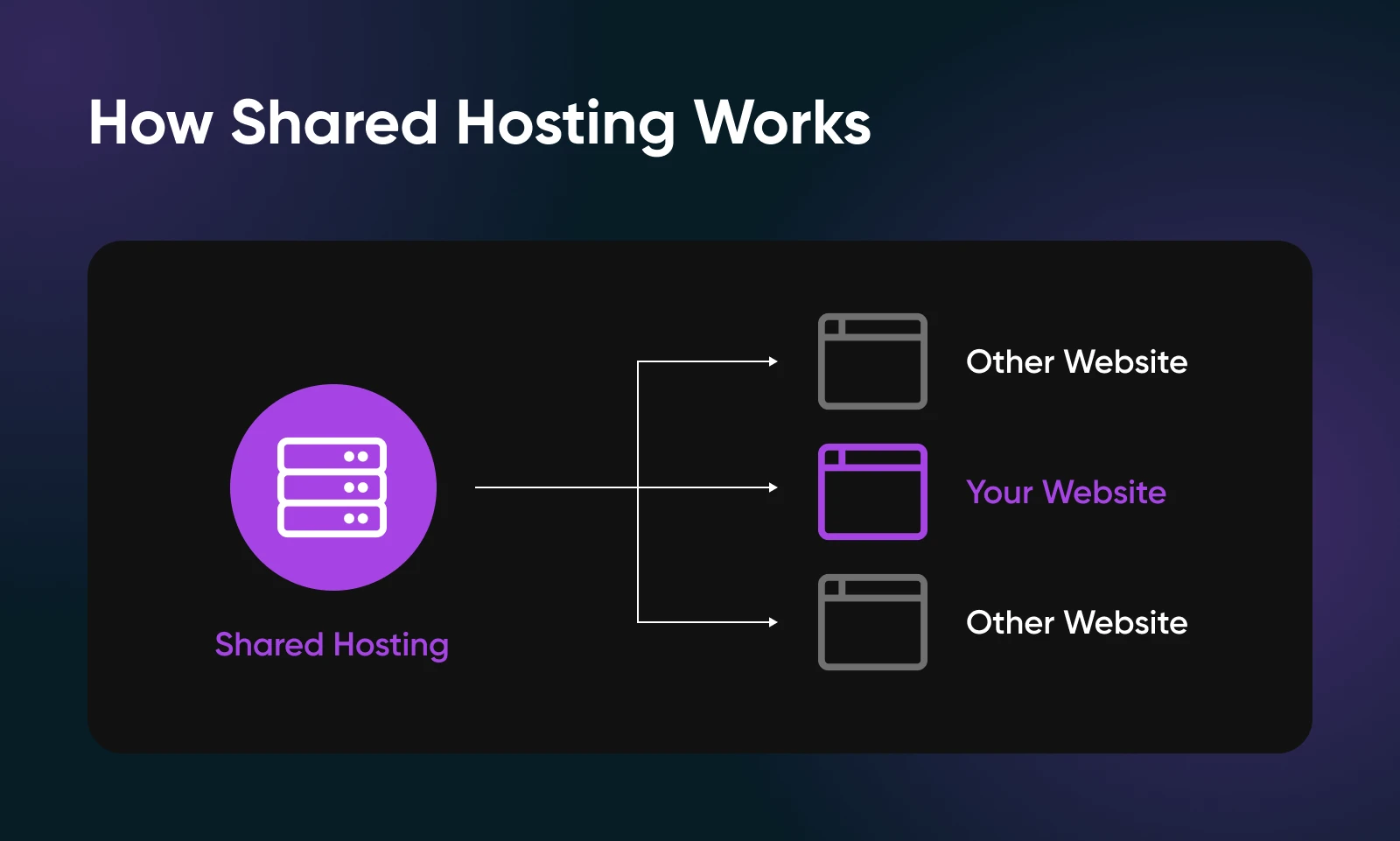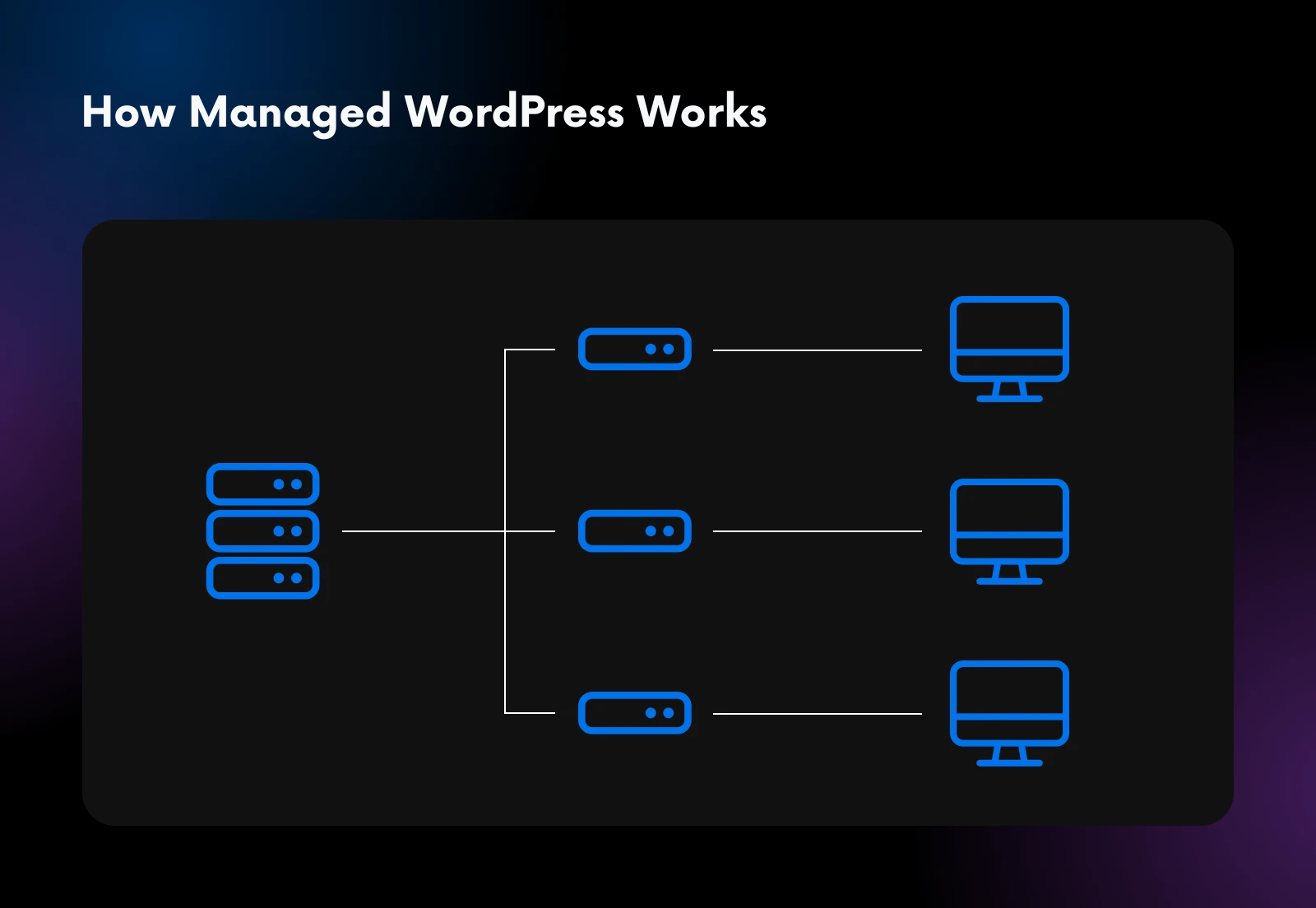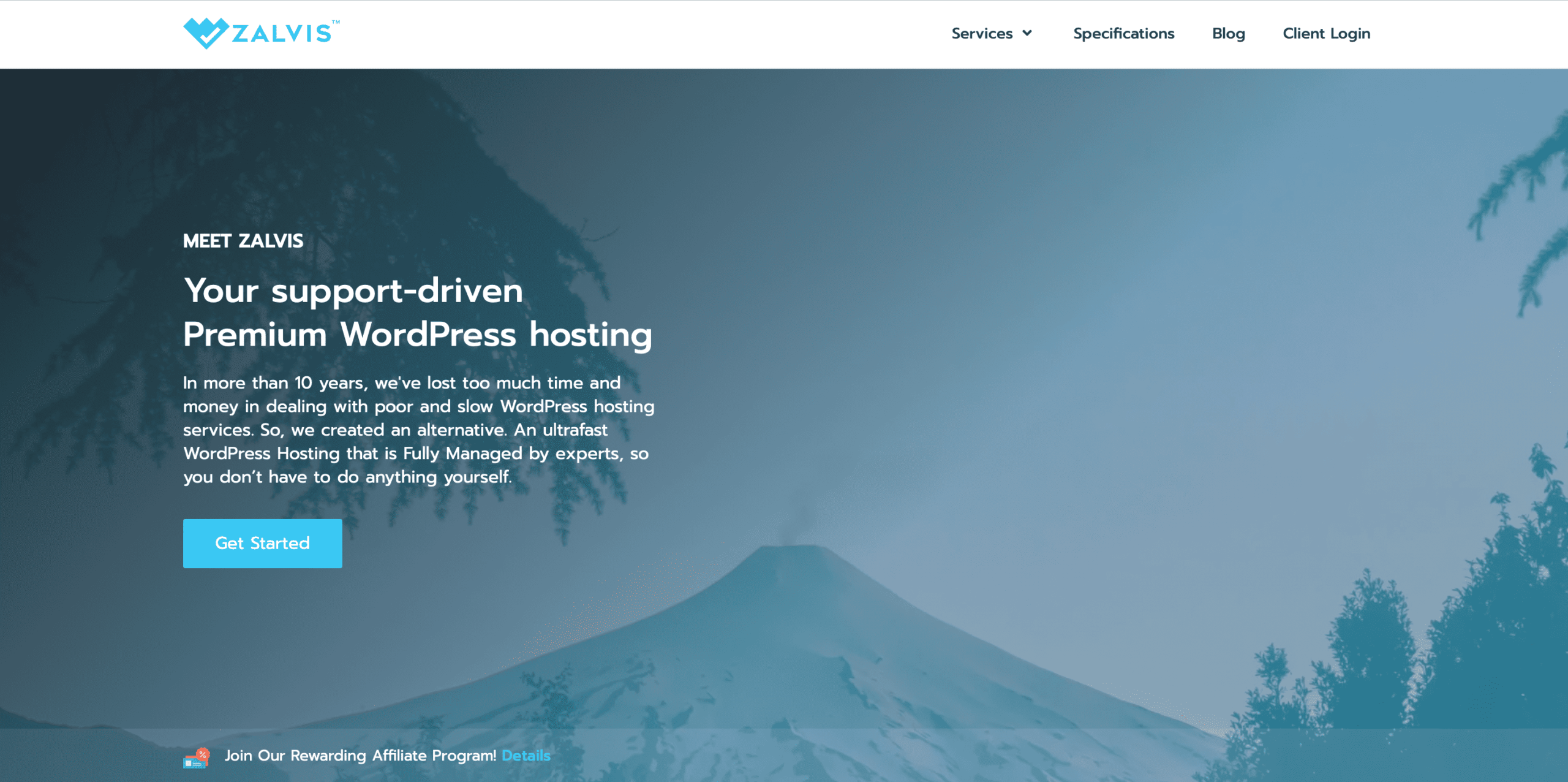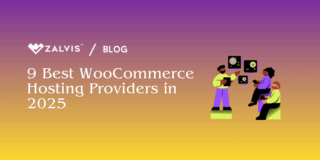The hosting you choose is the foundation of your entire website. Pick the right one, and you’re set up for a fast, secure, and successful online presence. Pick the wrong one, and you could be facing slow load times, security risks, and endless technical headaches. So, when it comes to the two most popular options—Shared Hosting vs Managed WordPress Hosting—how do you make the right choice?
Embarking on the creation of a new website is a uniquely human endeavor, a delicate balance of exhilarating hope and quiet, persistent fear. For the creator, the entrepreneur, the artist, this digital space is far more than a collection of code and images; it is the tangible form of a dream, the storefront for a new business, the megaphone for a voice that needs to be heard. Yet, standing at the very beginning of this journey, one of the first and most consequential decisions feels overwhelmingly technical: where will this dream live? This is the question of web hosting, and the answer chosen will become the very foundation of the entire digital enterprise.
The choice of hosting is not a mere technical line item to be checked off a list. It is the architectural blueprint for a digital home. Will it be a temporary, crowded rental apartment, or a custom-built estate with a dedicated security team? This foundational decision will profoundly influence the creator’s experience, the visitor’s perception of quality, and the project’s ultimate potential for growth. The path forward quickly diverges into two distinct options, each presenting a compelling, yet conflicting, narrative.
On one side lies Shared Hosting, often analogized to a no-frills, budget airline ticket—incredibly accessible and easy on the wallet, but fraught with potential turbulence and hidden trade-offs. On the other side is Managed WordPress Hosting, the equivalent of a business-class flight—a premium service that promises a smooth journey, expert attention, and profound peace of mind, but at a higher initial cost.

This report will serve as a comprehensive guide through this critical decision-making process, demystifying the technical complexities and illuminating the long-term consequences of each path. It aims to empower passionate creators and aspiring entrepreneurs with the clarity and confidence needed to select the foundation that will not just support their vision, but allow it to thrive.
Section 1: Understanding Shared Hosting – Your First Digital Apartment
The Core Concept and Architecture
Shared hosting is the most common entry point into the world of web hosting, and its fundamental concept is elegantly simple. It operates on a principle of communal living, much like a large apartment building or a bustling co-working space. In this model, a single, powerful physical computer—a web server—provides a home for many different websites simultaneously. These websites, or “tenants,” all share the server’s finite resources, including its processing power (CPU), memory (RAM), storage space, and network connection (bandwidth).
The architecture is designed for maximum efficiency from the provider’s perspective. By hosting hundreds or even thousands of websites on one machine, the substantial costs of purchasing, maintaining, and securing the server hardware are spread across a large customer base.
Each customer is allocated a partitioned section of the server where they can store their website’s files, but they do not have access to the server’s core settings or to the files of their digital neighbors. When a visitor types a website’s address into their browser, a request is sent to this shared server, which then locates the correct files and delivers them back to the visitor’s screen. This entire system is managed by the hosting provider, who handles the initial server setup, operating system, and basic services, making it an accessible option for those without technical backgrounds.
The Practicalities: Why It Feels So Tempting
The appeal of shared hosting for someone just starting their online journey is undeniable, resting on a trio of compelling advantages.
First and foremost is its unbeatable affordability. This is the primary draw that attracts a vast majority of new website owners. Because the server maintenance costs are divided among so many users, providers can offer plans for as little as a few dollars per month, sometimes starting at just $2 to $5. For a new blog, a small business testing an idea, or a personal portfolio, this low financial barrier to entry is incredibly attractive, allowing one to establish an online presence without a significant upfront investment.
Second is its beginner-friendly simplicity. Shared hosting providers understand their target audience and have designed the user experience to be as non-intimidating as possible. Most plans come equipped with a user-friendly graphical interface known as a control panel, with cPanel and Plesk being the most common. These dashboards transform complex server management tasks into simple, point-and-click operations. Installing WordPress, creating professional email addresses, managing website files, and setting up databases can often be accomplished in just a few clicks, requiring virtually no technical expertise or coding knowledge.
Finally, shared hosting offers a degree of broad flexibility. The server environment is typically platform-agnostic, meaning it isn’t exclusively tailored for one specific content management system (CMS). While perfect for WordPress, it can also be used to run other platforms like Joomla! or Drupal. This makes it a versatile sandbox for users who might want to experiment with different software. Furthermore, there are generally no restrictions on the types of plugins that can be installed on a WordPress site, giving users complete freedom to customize their site as they see fit.
The Inevitable Frustrations: The Hidden Costs of “Cheap”

While the low price tag of shared hosting is its most celebrated feature, this very attribute is the direct cause of its most significant and frustrating drawbacks. The business model necessitates maximizing the number of users per server to remain profitable, which in turn creates an environment of resource scarcity and shared risk. These are the hidden, non-monetary costs that often surprise and exasperate new website owners.
The most critical and common frustration is the “noisy neighbor” effect. The shared server environment can be analogized to a single highway during rush hour. If another website on the same server—a “neighbor”—experiences a sudden surge in traffic from a viral social media post, or runs a poorly coded plugin that consumes excessive resources, it creates a digital traffic jam. That site begins to monopolize the shared pool of CPU and RAM, leaving fewer resources for every other website on the server.
The direct result for an unrelated site is a dramatic slowdown in loading speed or, in severe cases, a complete crash and downtime, all through no fault of its own. This unpredictable performance can be devastating for a growing business, as studies show that a website’s loading speed has a direct and significant impact on user engagement and conversion rates.
This shared environment also creates a precarious security situation, akin to a set of security dominoes. Since all websites on the server reside within the same overarching file system, a security breach on one site can create a catastrophic chain reaction. If a hacker exploits a vulnerability on a neighbor’s site—perhaps through an outdated plugin or theme—they can potentially gain access to the entire server directory. This creates an entry point to attack every other website hosted there, a phenomenon known as cross-site contamination. WordPress, being the world’s most popular CMS, is a constant target for automated attacks, and in a shared environment, one user’s poor security hygiene can compromise the safety and data of everyone.
Beyond performance and security, shared hosting imposes a significant DIY burden on the user. The low cost means that day-to-day management falls squarely on the website owner’s shoulders. This includes the responsibility of performing critical WordPress core updates, updating all themes and plugins, and manually configuring and running regular website backups.
This is more than just a list of tasks; for a non-technical creator, it represents a source of constant, low-grade anxiety. Forgetting to perform these updates can leave a site vulnerable to attack, while a botched update can break the site entirely, leading to hours of stressful troubleshooting. This creates a hidden “time debt,” where hours that should be spent on creating content or growing the business are instead consumed by essential but tedious technical maintenance.
Finally, when problems inevitably arise, the support experience can be underwhelming. The customer support teams for shared hosting providers are, by necessity, generalists. They are trained to handle a wide array of basic issues across many different software platforms and are rarely WordPress experts. When faced with a complex, WordPress-specific problem like a plugin conflict causing the “white screen of death,” the support provided is often limited to generic advice like deactivating plugins or checking error logs. This leaves the user to fend for themselves, often spending hours scouring online forums for a solution that a specialist could identify in minutes.
Who Is Shared Hosting Truly For?
Considering its distinct advantages and significant limitations, shared hosting is best suited for a specific profile of user. It is the ideal starting point for the hobbyist blogger who is just beginning to write, the student creating a simple online portfolio to showcase their work, or a small local business that needs a basic, low-traffic “digital brochure” website. It is for projects where the budget is the absolute, overriding priority and where occasional slowdowns or the demands of self-maintenance are acceptable trade-offs for the rock-bottom price. For anyone with serious ambitions for growth, high traffic, or e-commerce, shared hosting should be viewed not as a permanent home, but as a temporary and transitional first step.
Section 2: Embracing Managed WordPress Hosting – Your Custom-Built, Concierge-Serviced Home
The Core Concept and Architecture
In stark contrast to the communal living model of shared hosting, managed WordPress hosting represents a premium, specialized service. The experience is best analogized to owning a custom-built smart home complete with a 24/7 concierge, a dedicated security team, and an on-call maintenance crew. The entire environment—from the physical hardware to the intricate software configurations—is meticulously designed, built, and optimized for one singular purpose: to run WordPress websites with maximum performance, security, and reliability.
The “managed” aspect is the cornerstone of its value. It signifies a fundamental shift in responsibility. With this service, a dedicated team of WordPress experts takes over all the complex and time-consuming technical aspects of running a website. This concierge-level service includes proactive performance tuning, rigorous security monitoring, automatic software updates, and daily backups. This frees the website owner from the burdens of server administration, allowing them to focus their energy entirely on what they do best: creating content, engaging with their audience, and growing their business. It is a holistic solution designed for those who view their website as a critical asset worthy of professional care.
The Power of a Specialized Environment: Investing in Peace of Mind

The decision to invest in managed WordPress hosting yields a powerful suite of benefits that address every major pain point of the shared hosting experience. This investment is not merely in better technology, but in stability, security, and the owner’s own invaluable time.
The most immediate and noticeable benefit is blazing speed and peak performance. This is not an accident; it is the result of a purpose-built server architecture. Managed hosts construct a finely-tuned technology stack where every component is selected for its synergy with WordPress. This often includes the use of next-generation hardware like Non-Volatile Memory Express (NVMe) Solid-State Drives (SSDs) for ultra-fast data retrieval, modern web server software like NGINX or LiteSpeed which are inherently faster than older alternatives, and advanced server-side caching mechanisms like Varnish or Redis.
These systems pre-build and store copies of web pages, allowing them to be delivered to visitors almost instantaneously. Many premium plans also integrate a Content Delivery Network (CDN), which distributes copies of a site’s assets to servers around the globe, drastically reducing load times for international visitors. The cumulative effect of this optimization is a consistently fast-loading website, a critical factor for improving user satisfaction, search engine rankings, and conversion rates.
This specialized environment also functions as a digital fortress of security. Recognizing that WordPress is a prime target for malicious actors, managed hosts implement a proactive, multi-layered defense system that goes far beyond the basic protections of shared hosting. This typically includes a managed Web Application Firewall (WAF) to block common attack vectors, continuous malware scanning and removal, and the automatic patching of known vulnerabilities at the server level.
Furthermore, these providers often maintain a curated list of disallowed plugins that are known to have security flaws or performance issues, preventing them from being installed and creating a risk. This comprehensive, managed approach to security provides a robust shield against threats, giving business owners confidence that their digital asset and customer data are protected.
Perhaps the most profound benefit for a busy creator is the “done-for-you” dream. Managed hosting effectively eliminates the DIY burden and its associated anxiety. Critical maintenance tasks are handled automatically and professionally by the hosting provider’s expert team. This includes all WordPress core software updates, and often extends to the automatic updating of plugins and themes. Automated daily backups are a standard feature, with most providers offering a simple, one-click restore function that acts as a vital safety net in case of a user error or a catastrophic failure. This automation is the service’s core value proposition; it is not just selling hosting, it is selling back the user’s most valuable and non-renewable resource: their time and focus.
When support is needed, users have access to an army of WordPress experts on their side. Unlike the generalist support of shared hosting, the support teams at managed providers are composed of WordPress specialists. These are technicians who have a deep, nuanced understanding of the WordPress ecosystem. They can efficiently troubleshoot complex and frustrating issues related to plugin conflicts, theme errors, database problems, and performance bottlenecks. Access to this level of expertise is akin to having an outsourced, on-demand IT department for a fraction of the cost of hiring one, providing immense value and rapid problem resolution.
Finally, managed hosting plans often include professional tools for growth that are made accessible to non-developers. The most valuable of these is the one-click staging environment. A staging site is a perfect, private clone of a live website. It provides a secure sandbox where the owner can safely test new plugins, experiment with a theme redesign, or implement custom code without any risk of breaking the public-facing production site. Once the changes are perfected, they can be pushed to the live site with a single click. This feature is invaluable for maintaining a professional and stable online presence while continuing to innovate and improve.
The Considerations: Understanding the Investment
The premium nature of managed WordPress hosting comes with two primary considerations that potential users must weigh.
The most obvious is the higher price point. Managed hosting is a comprehensive service, not just a commodity product, and its pricing reflects the inclusion of advanced technology, expert labor, and premium support. It is crucial to frame this cost not as a simple expense, but as a strategic investment. An effective way to evaluate this is through a return-on-investment calculation: if a managed plan saves a business owner several hours of technical work and worry each month, and that saved time is reinvested into revenue-generating activities, the service can quickly pay for itself. The investment is in performance, security, and, most importantly, the owner’s own productivity and peace of mind.
The second consideration is that it is a focused environment. These servers are meticulously optimized for WordPress and, in most cases, can only be used to run WordPress-based sites. For users who need to run a diverse range of applications, this limitation could be a drawback. Additionally, as part of their commitment to maintaining a secure and high-performance environment for all customers, some managed hosts may disallow the installation of certain plugins that are known to be resource-intensive or have security vulnerabilities. While this is done for the user’s protection, it does represent a slight reduction in the absolute control one might have in a less-regulated environment.
Who Thrives with Managed Hosting?
Managed WordPress hosting is the logical and necessary next step for those who have moved beyond the hobbyist stage and now view their website as a critical business asset. It is the ideal solution for serious businesses, high-traffic e-commerce stores, professional bloggers whose income depends on their site’s availability, and creative agencies that build and maintain websites for clients.
It is for any creator or entrepreneur who understands that their time and energy are finite resources that are better spent on growing their vision than on wrestling with the technical complexities of server management. The adoption of managed hosting is a clear indicator of a maturing digital economy, where a website is recognized not as a simple online flyer, but as mission-critical infrastructure deserving of professional management and a corresponding operational budget.
Section 3: Shared Hosting vs Managed WordPress Hosting: Head-to-Head
To distill the detailed analysis of the two hosting philosophies into a clear and actionable format, the following table provides a direct, side-by-side comparison. This framework is designed to help creators and entrepreneurs quickly identify the solution that best aligns with their specific priorities, budget, technical comfort level, and long-term ambitions. By juxtaposing the core attributes of each model, the fundamental trade-offs become immediately apparent, empowering a more confident and informed decision.
| Feature | Shared Hosting (The Digital Apartment) | Managed WordPress Hosting (The Concierge Home) |
|---|---|---|
| Performance | Performance is variable and unpredictable, susceptible to slowdowns caused by other websites on the same server (the “noisy neighbor” effect). | The entire server environment is optimized for WordPress speed, delivering consistently fast and reliable performance with advanced caching and CDNs. |
| Security | Offers basic, server-level protection. A security breach on a neighboring site can create vulnerabilities for all sites on the server. | Provides a proactive, WordPress-specific security fortress, including managed firewalls, regular malware scanning, and expert oversight to prevent threats. |
| Maintenance | A “Do-It-Yourself” model. The user is personally responsible for all software updates, security patches, and website backups. | A fully managed, “hands-off” experience. Core updates, patches, and daily backups are automated and handled by experts. |
| Support | Support teams are generalists who may lack deep WordPress-specific knowledge, potentially leading to frustrating and unresolved issues. | Provides 24/7 access to dedicated WordPress experts who can rapidly diagnose and resolve complex, platform-specific problems. |
| Cost | The initial monthly cost is very low, but there are high potential hidden costs in terms of lost time, troubleshooting stress, and revenue lost from poor performance. | Requires a higher initial investment but provides immense long-term value through saved time, enhanced security, superior performance, and peace of mind. |
| Scalability | Scalability is limited. Sudden spikes in traffic can easily overwhelm the shared resources and cause the site to crash. Growth often necessitates a complex migration. | The infrastructure is built to scale. It can handle significant traffic spikes with ease, often utilizing auto-scaling technology to allocate resources dynamically. |
| Ideal User | Best suited for hobbyists, students, and those creating simple, low-traffic personal sites where budget is the single most important factor. | The definitive choice for serious businesses, e-commerce stores, professional creators, and agencies that value reliability, security, and their own time. |
Section 4: The Zalvis Difference – Pioneering the Future of Managed WordPress Hosting
Once a creator recognizes the immense long-term value of managed hosting, the next question becomes one of differentiation. In a competitive market, not all managed hosts are created equal. The landscape is evolving, and certain providers are moving beyond incremental improvements to fundamentally re-engineer the hosting environment. Zalvis stands at the forefront of this evolution, having built a platform from the ground up to solve the core, lingering challenges of traditional hosting architecture.
The Kubernetes Revolution: A Permanent Solution to the “Noisy Neighbor”
The key differentiator that sets Zalvis apart is its pioneering use of a Kubernetes-based infrastructure. To understand the significance of this, one must grasp the historical problem of web hosting: resource contention. Traditional hosting, including many managed solutions, places multiple websites on a single server, whether physical or virtual. Zalvis’s Kubernetes architecture represents a paradigm shift from this model of “resource sharing” to one of “resource isolation and elasticity.”
In simple, benefit-driven terms, this means that every single website hosted on the Zalvis platform is placed within its own isolated, self-contained, and portable “container”. This container has its own dedicated resources. The immediate and profound benefit of this architecture is the complete and permanent elimination of the “noisy neighbor” problem. A sudden traffic spike or a resource-intensive process on another user’s website has absolutely zero impact on any other site, as they are in entirely separate, sealed environments. This containerized approach also enables unparalleled auto-scaling.
If a website suddenly goes viral or experiences a massive influx of visitors, the Kubernetes system automatically and instantaneously allocates more resources to that specific container to handle the load, ensuring the site remains fast and online without crashing. This is not just an improvement on the old model; it is a more intelligent, resilient, and efficient model of hosting that provides the ultimate promise of reliability.
A Symphony of High-Performance Technology
Building upon the revolutionary foundation of Kubernetes, Zalvis has assembled a complete technology stack where every component is selected for elite performance. This demonstrates a holistic and uncompromising commitment to speed.
- LiteSpeed Web Servers: The platform utilizes LiteSpeed Enterprise web servers, which are widely recognized in the industry for being significantly faster and more efficient at serving WordPress sites than older technologies like Apache.
- High-Speed NVMe Storage: All website data is stored on next-generation NVMe SSDs. This technology offers dramatically faster data read/write speeds compared to even traditional SSDs, resulting in quicker page load times, a more responsive WordPress admin panel, and a superior overall user experience.
- Proprietary Global CDN: Included with all plans is a built-in, globally distributed Content Delivery Network. This proprietary CDN caches a website’s static assets (like images and scripts) in multiple locations around the world, ensuring that content is delivered to visitors from the server geographically closest to them. This drastically reduces latency and accelerates load times for a global audience, a feature that is often sold as a costly premium add-on by other providers.
Peace of Mind, Solidified by Proof
Zalvis’s cutting-edge technology is paired with robust features that deliver the core promise of managed hosting: security and peace of mind. The platform includes a comprehensive security suite featuring a Web Application Firewall (WAF), proactive daily malware scanning, and free SSL certificates to protect against threats. Furthermore, automated daily backups are standard, with each backup being stored for a full month, allowing for simple, one-click restoration in the event of data loss or user error.
However, the most compelling evidence of a platform’s value comes from the experiences of its users. Authentic testimonials validate the technological claims with real-world results.
- On the subject of performance, user Takeshi Kitano, who manages five large, high-traffic WordPress sites, states that Zalvis’s infrastructure “handles it like butter”. Another user, Lui Tuck Yew, reports that after migrating, the Zalvis team audited and optimized his site for free, resulting in it now having an “A+ performance score on GTmetrix”.
- Regarding support, the praise is equally strong. Samrat Ghosh describes the help he received as “Super fast support”. Himashu awarded the service “Six stars,” praising a support agent for an “Incredible job” who not only resolved an issue in minutes but also proceeded to help improve the website’s security. Crucially, the support is also accessible and empathetic to non-technical users. Shyamal Jha, a self-described senior citizen who is “not very savvy with computer/desktop terms,” had a “great experience” because the support team was patient, helpful, and took the time to explain everything in layman’s terms. This combination of advanced technology and highly-rated human support is a powerful market differentiator.
Why Zalvis is the Smart Investment
Zalvis is more than just another managed hosting provider. Its unique Kubernetes-based architecture positions it as the definitive choice for creators and businesses that are building for the future. It offers a solution that appeals simultaneously to the tech-savvy developer who appreciates the superior, scalable architecture, and to the non-technical business owner who simply wants a fast, reliable website backed by exceptional, patient support. Choosing Zalvis is not just selecting a hosting plan; it is investing in a foundation engineered for the demands of tomorrow’s internet, ensuring that a project’s infrastructure will never be a barrier to its success.
Conclusion: Invest in Your Foundation, Invest in Your Future
The journey from the initial spark of an idea to a fully realized online presence is paved with critical decisions. The choice of web hosting stands as one of the most fundamental, setting the trajectory for a project’s stability, speed, security, and potential for growth. The path splits clearly between the immediate, tempting savings of shared hosting and the long-term, compounding value of a premium managed solution. Shared hosting offers an accessible entry point, a digital starting line for those with minimal budgets and modest needs. Yet, this affordability comes at the cost of shared risk, unpredictable performance, and a significant burden of self-maintenance—a cost often paid in lost time, customer frustration, and sleepless nights.
Managed WordPress hosting, in contrast, presents a strategic business decision. It reframes the conversation from “How much does it cost?” to “What is my time worth? What is my customers’ experience worth? What is my peace of mind worth?” It is an investment in a specialized environment where every component is optimized for excellence and a team of experts works tirelessly behind the scenes to ensure a seamless experience. This allows creators and entrepreneurs to dedicate their finite energy to their true passion and expertise, rather than becoming reluctant server administrators.
In this advanced landscape, a provider like Zalvis represents the pinnacle of this philosophy. By leveraging next-generation container-based technology, it has architecturally solved the inherent flaws of traditional hosting models, delivering unparalleled reliability and scalability. When this technological superiority is combined with a proven track record of expert, empathetic human support, it becomes the clear choice for those who are serious about their digital ambitions. The final decision rests not on technical specifications, but on a vision for the future. Choosing a host like Zalvis is the first and most critical investment in that vision—a declaration that the online dream being built deserves a foundation that will not crack under the immense weight of its future success.
If you enjoyed this article, then you’ll love Zalvis's WordPress Hosting platform. Turbocharge your website and get 24/7 support from our veteran team. Our world-class hosting infrastructure focuses on auto-scaling, performance, and security. Let us show you the Zalvis difference! Check out our plans.




